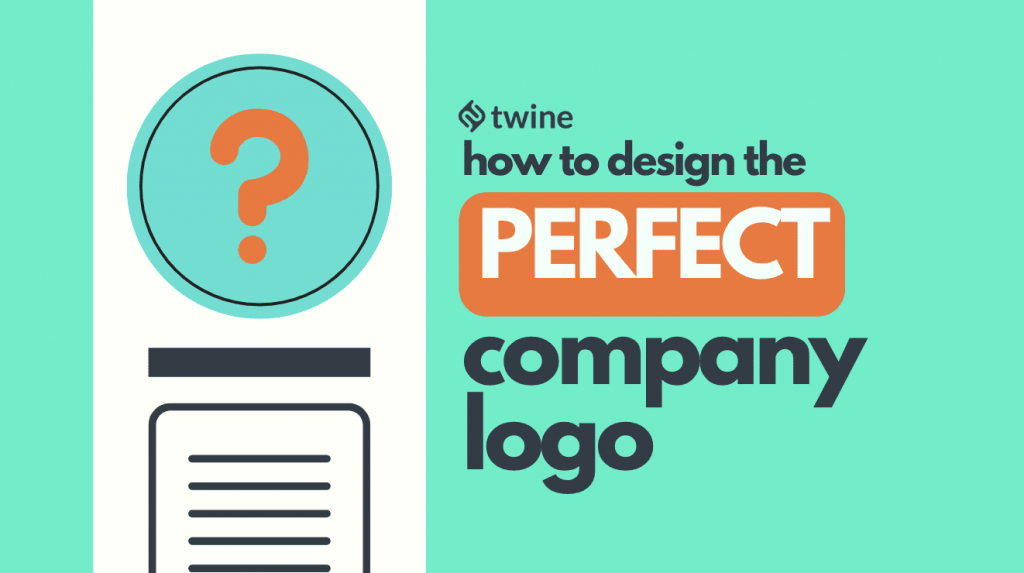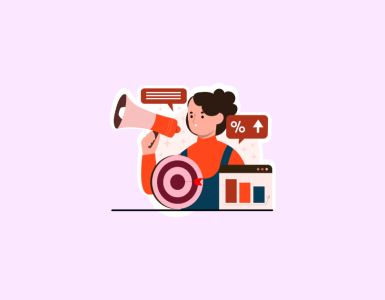
For more Creative Tools, check out the Freelancer Toolkit…
A logo is one of the most powerful marketing tools. A well-designed company logo can help your business stand out from the competition, establish trust with potential customers, and reinforce your brand identity.
On the other hand, if you’re not careful, designing a logo can be one of the most expensive mistakes you could make for your company.
So how do you avoid that fate?
Well, let’s dive into the seven steps for designing the perfect company logo.
Ready to jump right in?
Wait! We have over 20,000 Logo Designers ready to design you the perfect company logo…
1. Create a list of keywords that describe your company
To begin, make a list of words that describe your company. You can write them down with a pen and paper, use sticky notes and attach them to your office wall – or simply open a fresh Google Doc and start writing.
Regardless of your preferred creative outlet, this brainstorming list will be the foundation for your company logo, and give you an idea of what kind of imagery to use in the design process.
If you hit a creative rut, you can always reference a thesaurus for more words and ideas. You can also take elements representing your industry, product, or service as inspiration.
For example, if you are in the automotive industry, you could take tires and rims and transform them into vectors for your logo. This design methodology helps you to create a logo that properly represents your brand and is easily identifiable by your target market.
Also, don’t forget to think about any mission statements or values you wish to convey with this new visual identity. Are they aligned with what type of message you want to convey through this logo? Ask yourself these questions to help get you started:
- What’s your company goal?
- What do you want people to know about your company?
- What are the things that are most important to you and your team?
- Are there key qualities that make you who you are as a business?
2. Keep your target audience in mind

A logo is an essential part of creating your brand’s visual identity. Your logo should reflect the company’s image and values and offer a clear message about what you do and who you serve.
Before you start the actual design process, it’s important to think through your target audience:
- Who’s your target audience?
- What are their demographics?
- What are their interests?
- Who influences them?
You’ll want to consider this information as it’ll help guide your design decisions later when choosing colors, fonts, and symbols that’ll best resonate with them.
For example, if you’re creating a logo for a company that sells products to children, it’s important to make sure the design is fun and playful. You may want to go with something more formal and sophisticated if your audience is older.
3. Determine how you want to be perceived

Now that you have a firm grasp on the image you want to portray, and what kind of brand identity your company should have, it’s time to think about how you want to be perceived by customers.
- A strong design can help create brand equity by establishing a recognizable image in the minds of consumers.
- It can provide clarity and consistency when communicating with customers, partners, and other stakeholders.
- It can help differentiate you from competitors and make potential customers more likely to choose your product over theirs.
When you’re designing a logo, it’s important to keep these three things in mind:
- What does your logo say about the quality of your brand?
- Does it tell customers how you want them to feel about your company?
- Is it easy for customers to identify with?
These factors can help guide decisions about color palettes, fonts, and other design elements as you move forward in the design process. You can choose to make a bold statement or go for something more subtle — the choice is entirely up to you.
A good rule of thumb to follow is that if your logo doesn’t match your brand’s personality or tone — if it looks like something off-brand — then people won’t take your brand seriously. By keeping your logo consistent with the personality and tone of your brand, you can make sure that people take your brand seriously from the get-go.
4. Take inspiration from other logos
One of the best ways to jumpstart the design process for your logo? Look at other logos and get inspired. You can do a simple Google Image Search, or you can go through our list of logo design ideas to find great examples of company logos.
Clearly, the goal here isn’t to copy other successful logos. Instead, take note of what you like about each one.
- Is it the typeface?
- The color scheme?
- The overall design?
Keep these aspects in mind when creating your logo design. For example, maybe you love the Facebook logo vector, and want to incorporate the simplicity of the design into your logo.
After all, it is a pretty powerful logo that’s easily recognizable around the world, by billions of people. On the other hand, if there are elements that you don’t like, throw them out completely and start fresh with something new.
5. Reference color psychology when picking colors
Color psychology studies how color affects mood, attitude, and behavior. It’s based on the idea that certain colors have different associations in people’s minds and that those associations can affect their emotions and behavior. For example:
- Red: excitement and strength
- Orange: friendly and cheerful
- Yellow: creativity and happiness
- Green: nature and growth
- Blue: trust and dependable
- Purple: royal and luxurious
- Black: bold and stable
Colors spark connections with our emotions and memories. Choosing the right colors for your brand will have a significant impact on how consumers respond to you and how they see your logo. Once you have a color in mind, you can always consult a color wheel to see which colors look best together during the design process.
6. Use negative space to your advantage
Sometimes less is more. In logo design, negative space is the white or gray area around your logo’s main image. Use negative space to create a more dynamic and professional logo than one with too much clutter.
Here’s how you can use negative space in your company’s logo:
- Use negative space to draw attention to your logo
- Create a design that has less detail and uses fewer colors
- Use geometric shapes (squares, triangles)
Another important thing to remember is to create a vector file version of your logo. Vectors allow for infinite scalability. If you shrink the file to fit on a business card or blow it up to post on a billboard, it doesn’t lose its image quality.
7. Don’t be afraid to outsource
A company logo isn’t exactly the place to gamble. Don’t look for an easy, cheap route, here – you need to remind your customers that you mean business. Before making any definitive decisions, consult an expert logo designer who can discuss with you every aspect of logo design.
If you are a graphic designer or freelancer yourself, this is a great opportunity to use your skills and give it a go at designing your ideal logo. If not, don’t fret. There are plenty of ways to get help.
On the other hand, if you don’t have a creative bone in your body, and want to see how your logo might look, a logo maker can help give you an idea. While it won’t exactly be a custom, ready-to-use logo, it can give you the gist of how a professional logo might look for your business.
Wrapping up
Designing a logo is a lot of work. It’s not something you can do quickly or easily, but it’s well worth the effort.
Think about your company, who your target audience is, and how you want people to perceive your brand. These questions need answers before creating any design, including a logo. A good logo will appear on everything from letterhead and business cards to websites — make sure it reflects who you are as a company.
When it comes to company logos, there are plenty of different elements that you can play with. From color schemes, fonts, and imagery to the logo’s overall shape, there are so many variables that it can be overwhelming for a first-time designer. But, don’t worry. By following these seven steps and keeping an open mind as you go through them, you’ll be able to create something that perfectly represents your brand for years to come.
Ready to hire? Our marketplace of over 410,000 diverse freelancers has the skills and expertise needed to skyrocket your business. From marketers to designers, copywriters to SEO experts – browse the talented bunch here!




